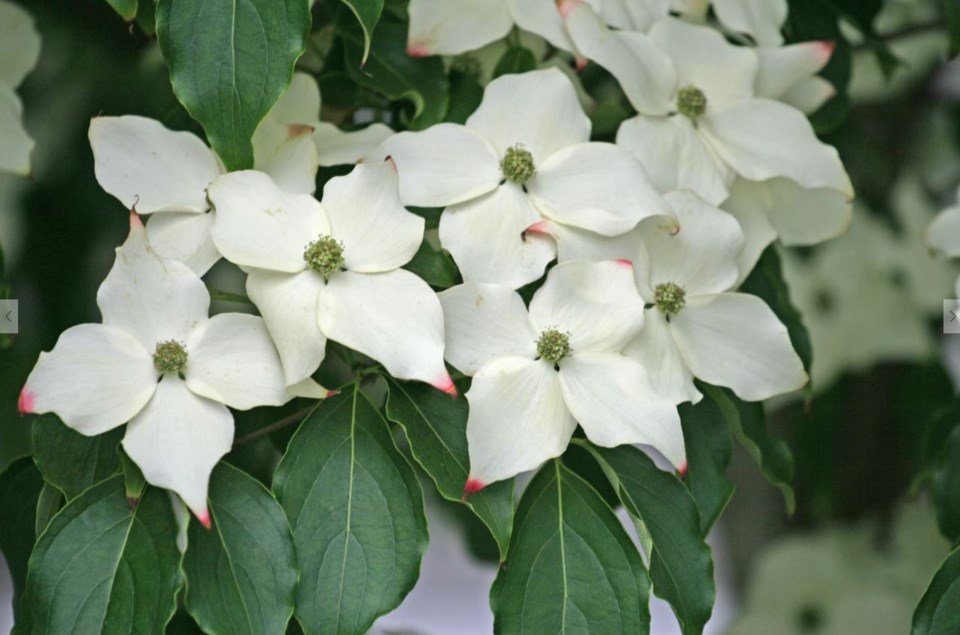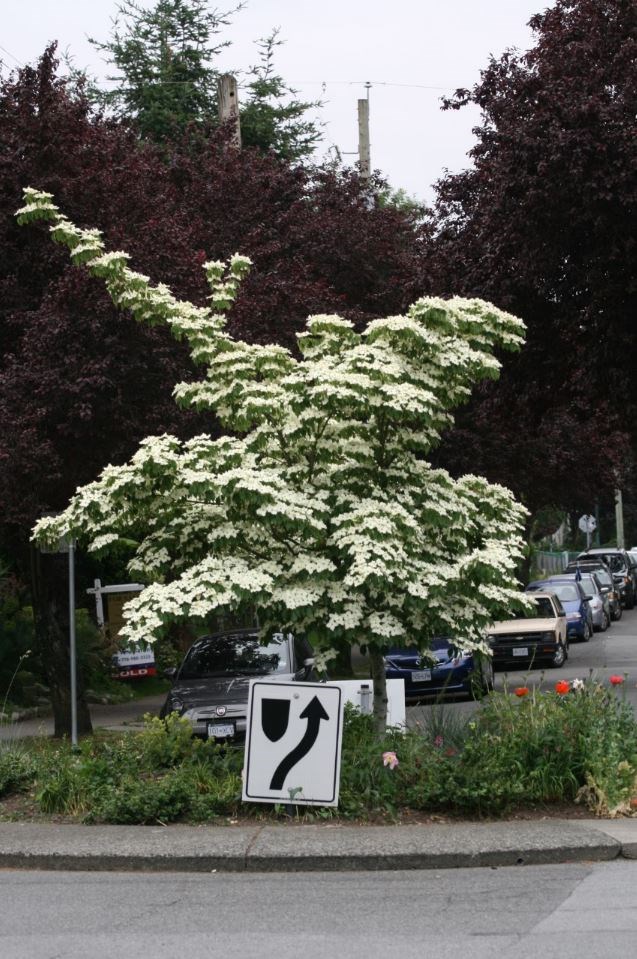
The flower show has been spectacular this spring for dogwood trees. If you've noticed a small to medium-sized tree with a thin grey trunk (or trunks) spreading out into a vase shape, you've probably found a kousa dogwood (Cornus kousa). And how could you not? They're head-turners when blooming as they've been for the past few weeks. If you look around you'll still catch some on display.
The floral effect is arresting, and also deceiving. What looks like a big, brilliant white flower is actually made up of bracts, or modified leaves trying to look like a flower. They do a good job of it, alerting pollinators from blocks away that there is indeed a blossom here waiting to be ravished, even if the actual floral part is an insignificant greenish cluster in the middle of the array.
The kousa dogwood has other common names, including Japanese dogwood, Korean dogwood and Chinese dogwood. But rather than wade into that sensitive cultural question to choose, suffice to realize the tree's origins are in Asia and kousa dogwood is as good a common name as any.

We have a native dogwood too, one that's striking enough to earn a place as the official floral emblem of the province. You can still spot Pacific dogwood (Cornus nutallii) in a few yards and gardens around town, but the trees haven't done well in recent years fending off a fungal disease, so the hardier import is planted more widely.
If you miss the flowering season this year, don't despair. Kousa dogwood still have special effects to offer, with something worth seeing in all four seasons. In autumn it's fall colours as the leaves turn purple or red or orange. In winter, the mature bark with patches of grey like camouflage heighten the interesting architecture of the branches. In spring, as now, it's all about the flowers. And later in summer you get the bonus of fruit.
Yes, fruit, and yes, they are edible. Most people aren't bold enough to try. Maybe because they look odd - like soft, red, marble-sized globes with spiky protrusions. The inner texture is a bit too mealy to get excited about. But from the right tree in the right conditions it is quite sweet so somebody with a creative flair for cooking could probably make something memorable.
If you do, send me a sample.
--
David Tracey is the author of the BC #1 Bestseller Vancouver Tree Book.


